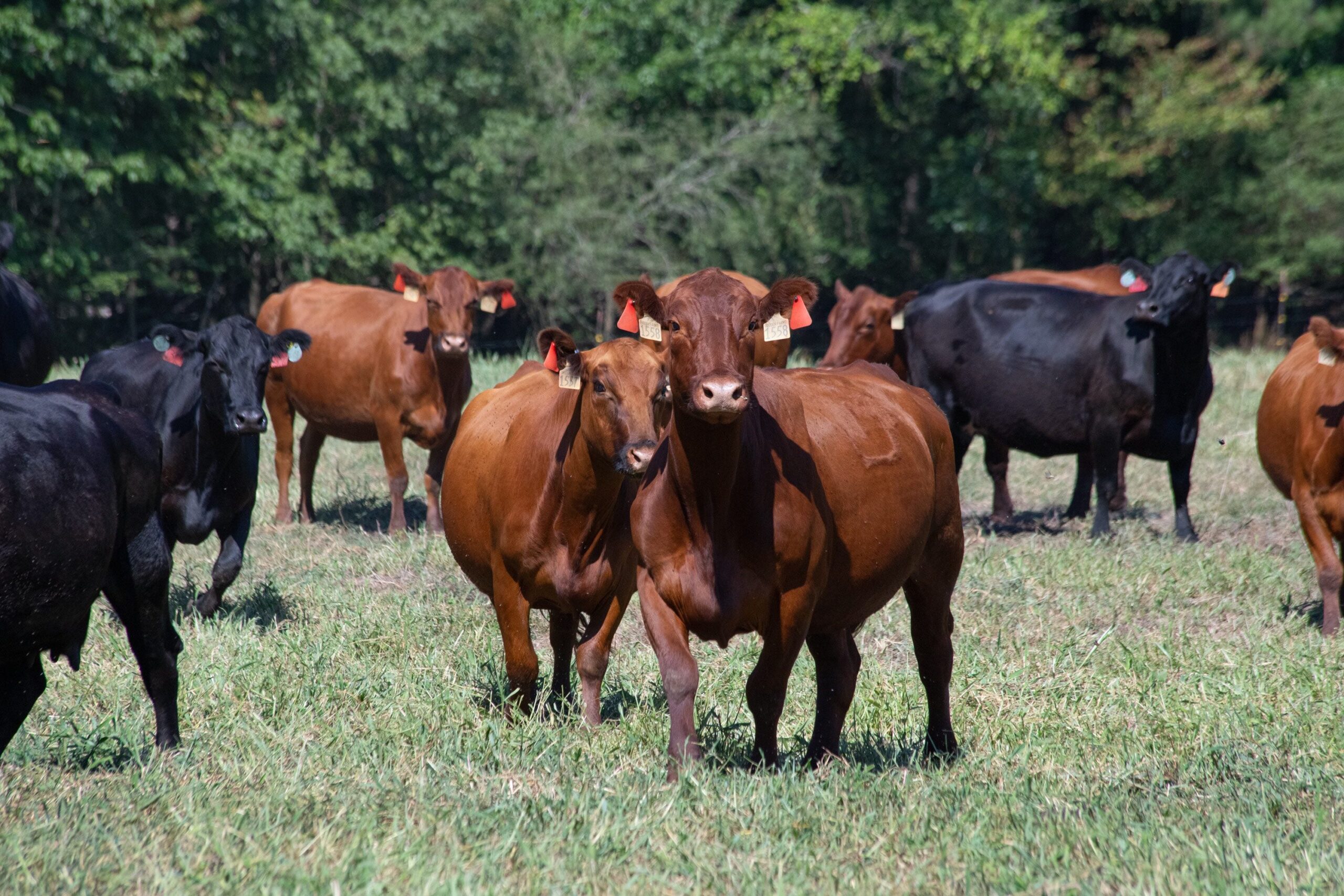Total beef production can be defined as the number of animals slaughtered times the average dressed weight. I’ll briefly discuss the steer dressed weight in this article, emphasizing its recent surprising behavior. Dressed weight corresponds to the weight of the carcass minus feet, head, hide, and organs (ERS/USDA). Figure 1 shows the atypical seasonal pattern so far in 2024 for the U.S. federally inspected weekly average steer dressed weight. The blue line exhibits the 2024 counter-season pattern when contrasted with 2023 (dotted line) and the 2018-2022 average (red line).
Following a record high for the first week of January (937 lb./head), the dressed weight experienced a gradual decline until the fifth week of 2024, when it reached 909 lb./head. Winter weather helps explain this fall at the beginning of the year. However, instead of continuing to decrease, the dressed weight unexpectedly surged, reaching record highs for weeks 9 to 16. During this period (weeks 9 to 16), the steer’s average dressed weight was 921 lb./head, tallying 25 lb./head heavier than in 2023 and 32 lb./head more than the previous five years’ average.
One of the key factors contributing to the recent increase in dressed weight is the surge in days on feed. The number of cattle on feed (COF) for over 120 days significantly increased, exceeding 4.9 million head in April, up by about half a million from last year. Meanwhile, the COF, for over 90 days, plateaued at around 6.6 million heads since February. As the cost of gain has dropped, producers tend to increase weights. But, keeping the yard full and packers slowing harvest schedules may be more important factors in dressed weights. One by-product of heavier weights and more days on feed is the percent of carcasses grading Prime. In fact, the percent of Prime carcasses jumped from 9.9 percent in the first week to 11.4 percent in the last week of April 2024 (Figure 2). More Yield Grade 4’s and 5’s is another by-product, but that is another subject.
In the short run, the dressed weight shows a counter-season pattern. Nevertheless, in the long run, the steer dressed weight exhibits an upward trend. Figure 3 illustrates this behavior, displaying an average increase of 4.95 pounds for every additional year (linear regression, dotted line). In 50 years, the average dressed weight has grown by approximately 30%. It means that nowadays, three steers produce almost the same amount as four steers in the seventies. Technological advancements, such as in nutrition, management, and genetics, help explain this phenomenal growth.
Figure 1 – Steer Dressed Weight, Federally Inspected, Weekly

Figure 2 – Beef Graded Prime as Percent of Beef Graded, Weekly

Figure 3 – Steer Dressed Weight, Federally Inspected, Yearly

References
AMS/USDA. (2024, May 10). Retrieved from: https://publicdashboards.dl.usda.gov/t/MRP_PUB/views/LPMeatGradingDashboard/GradeData?%3Aembed=y&%3Aiid=1&%3AisGuestRedirectFromVizportal=y
ERS/USDA. (2024, May 10). Retrieved from: https://www.ers.usda.gov/data-products/chart-gallery/gallery/chart-detail/?chartId=77827
NASS/USDA. (2024, May 10). Retrieved from: https://quickstats.nass.usda.gov/

